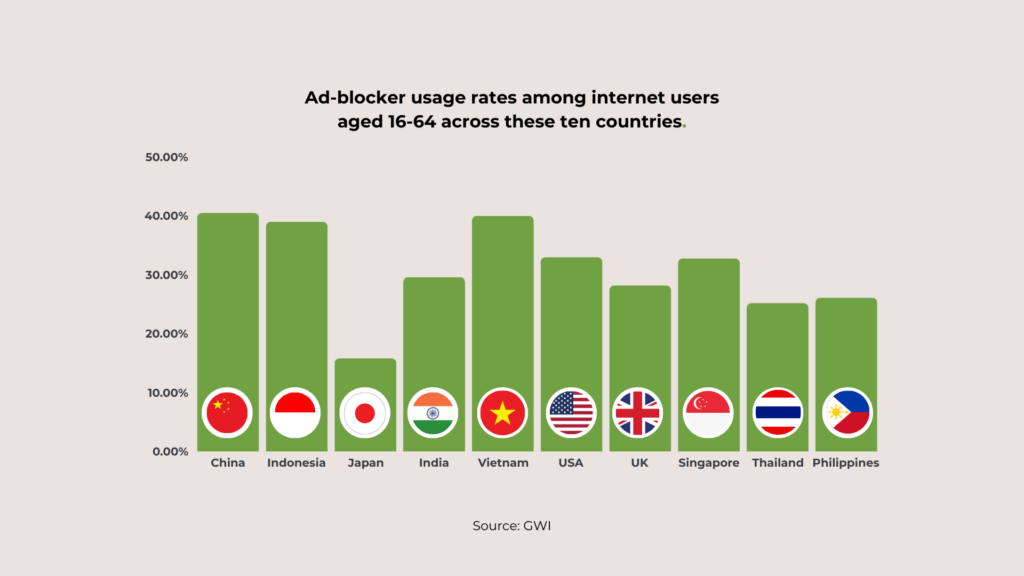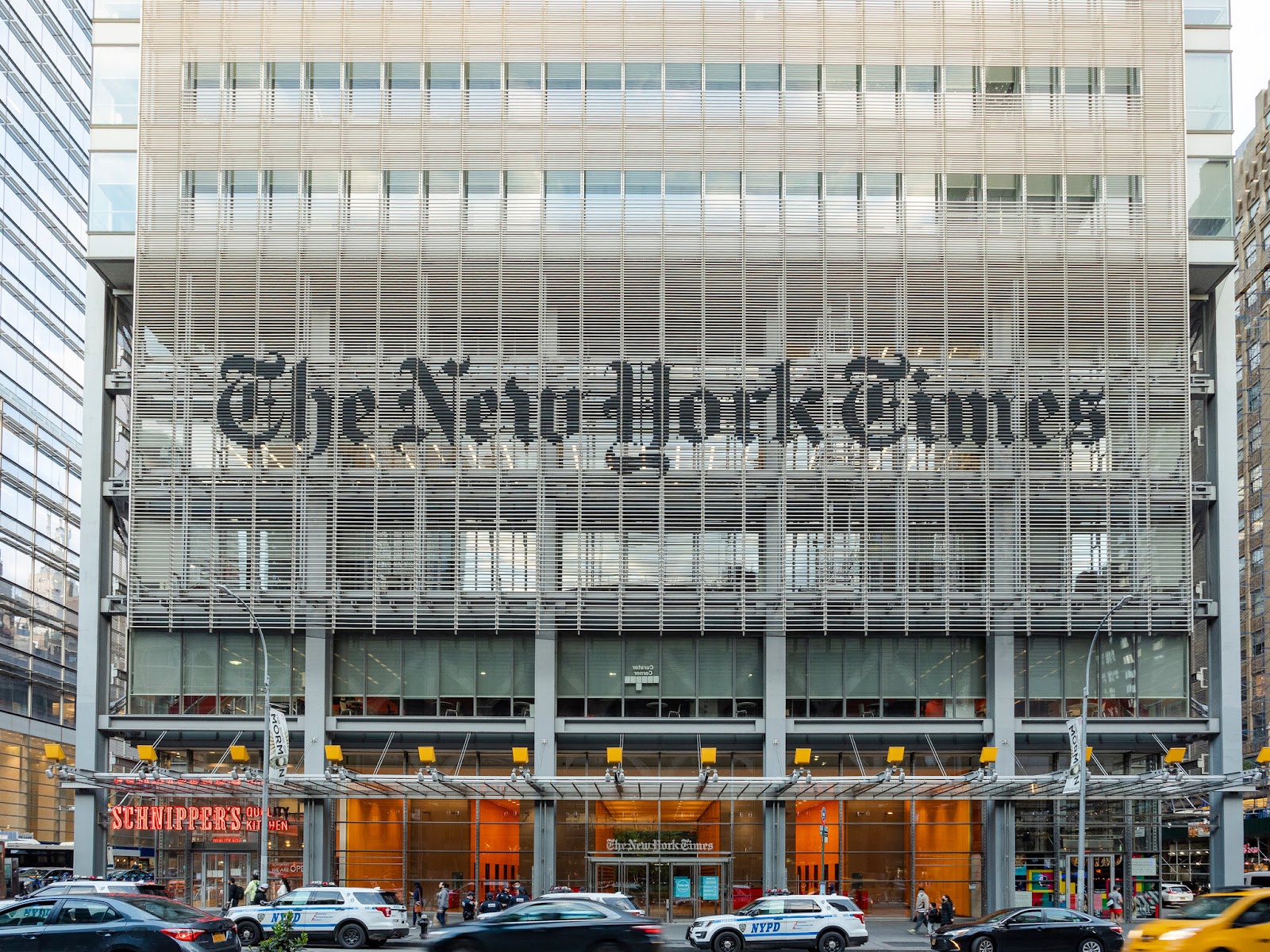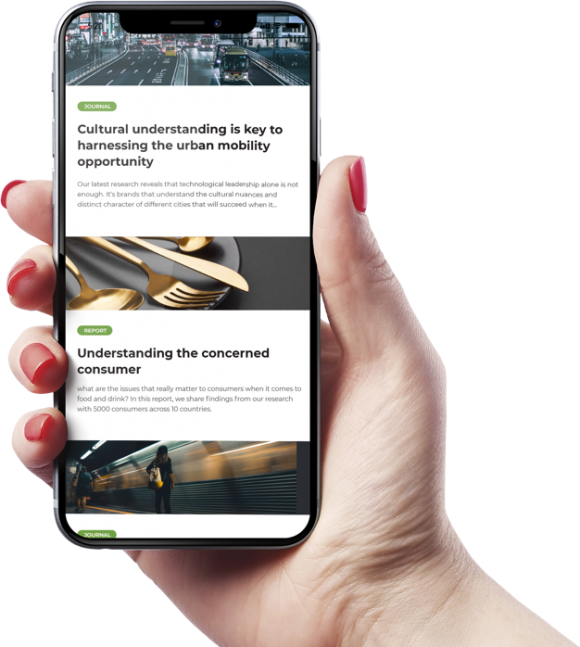The rise of ad blockers has sparked a major revolution in digital advertising. Gone are the days when users passively accepted every pop-up, banner, and video ad thrown their way. Fed up with the constant barrage of intrusive advertisements, many have turned to ad blockers as a digital shield. This massive shift has thrown a wrench in the traditional advertising machinery, causing publishers and content creators, who’ve long relied on ad revenue, to watch potential earnings vanish. Ad blocking has cost the industry billions in lost revenue worldwide.
But here’s the kicker: This isn’t just a challenge; it’s a wake-up call. The emergence of ad blockers is forcing advertisers and publishers to rethink their strategies from the ground up. It’s no longer enough to bombard users with ads and hope for the best. The future belongs to those who innovate—those who understand that monetizing content in the age of ad blockers means finding new, creative ways to deliver value without disrupting the user experience. This is not merely a strategic edge; it’s the key to survival in the rapidly evolving digital world.
Understanding Ad Blockers
Ad blockers have reshaped online advertising. Understanding their impact is crucial for any digital company as they become increasingly prevalent.
Statistical Insights into the Growth of Ad Blocker Usage:
- Global Usage: Ad-blocking technology has been around for quite some time now. The first ad-blocking extension was introduced back in 2002. By 2009, the number of devices using ad blockers had reached a significant milestone of 20 million. Ad-blocking software has become even more widespread today, with 32.8% of internet users reporting using an ad blocker worldwide. This trend has expanded beyond desktop devices, as ad-blocking software is now widely available and commonly used on mobile phones and tablets. This significant increase in ad-blocking usage signals a growing trend among desktop and mobile users.
- Demographic Trends: Ad blocker usage is notably higher among younger demographics, particularly those aged 18-24, with over 50% using ad blockers regularly. This trend highlights a generational shift in how content is consumed and ads are perceived.
- Regional Variations: Usage rates vary by region, with the highest adoption in Asia and Europe. For instance, countries like Indonesia and India see rates exceeding 50%, while the rate is about 27% in the United States.
GWI analyzed and ranked the percentage of ad-blocker usage among internet users aged 16-64 across these ten countries:

Why are consumers blocking ads?
Consumers turn to ad blockers for several compelling reasons, which include:
- Privacy Concerns: Many users cite privacy as a primary reason for using ad blockers. They are wary of tracking cookies and other data collection methods ads typically use to personalize marketing efforts.
- Annoyance Due to Intrusive Ads: Intrusive ads, such as pop-ups, video auto-plays, and large banners, significantly detract from user experience. This annoyance is a major driver behind ad blocker installations.
- Page Load Speeds: Ads can slow webpage loading times, affecting user satisfaction and engagement. Faster browsing experiences are often cited as a key benefit of using ad blockers.
Consequences of Ad-blockers for Publishers and Content Creators
The rise of ad blockers has had profound financial impacts on those who rely on ad revenues:
- Revenue Loss: It’s estimated that publishers lose over $15 billion annually worldwide due to ad blocking. This figure is expected to grow as ad blocker usage increases.
- Impact on Business Models: Many content creators, especially smaller publishers and independent bloggers, find it increasingly difficult to sustain their operations purely on ad revenue.
- Forced Strategic Shifts: The decline in effective ad reach has prompted many businesses to explore alternative revenue streams, such as sponsored content, subscription models, and direct supporter funding via platforms like Patreon.
Market Research Insights on Consumer Preferences
Effective content monetization in the era of ad blockers hinges on a deep understanding of consumer preferences. Market research provides valuable insights into how consumers interact with different content formats and monetization models, which can guide publishers in crafting strategies that align with user expectations.
How Consumer Preferences Shape Content Monetization Possibilities
- Preference for Unobtrusive Advertising: Consumers prefer content that offers a seamless experience, where ads are integrated naturally without disrupting engagement. This has led to the rise of native advertising and sponsored content, which are less likely to be blocked or negatively perceived.
- Value-Driven Content: Users are more willing to tolerate ads or pay for content when they perceive direct value from their consumption, such as exclusive information, entertainment, or utility.
- Engagement Over Interruption: Market research shows a shift from interruption-based advertising towards engagement-driven models. For instance, interactive or gamified ad experiences have lower resistance and higher engagement rates.
Demographic Trends in Ad Blocker Usage
- Younger Users: The highest ad blocker usage is among younger demographics, particularly those aged 18-34. This group is also more tech-savvy and likely to seek ways to optimize their online experience.
- Tech-Enthusiast and Privacy-Concerned Segments: High adoption rates are also seen among tech enthusiasts and privacy-conscious consumers, who are more aware of the tools available to control their digital footprint.
- Geographical Variations: In regions with slower internet speeds or more intrusive ad practices, ad blocker usage is particularly high, reflecting a direct response to poor user experiences.
Consumer Willingness to Pay for Ad-Free Content or Different Content Formats
As traditional ad revenue streams become less viable due to ad blockers, understanding and responding to these preferences can help publishers and advertisers create more sustainable and effective monetization strategies.
- Subscriptions and Memberships: There is a growing willingness among consumers to pay for ad-free experiences, as seen with the success of platforms like Netflix, Spotify, and premium news outlets. Consumers value uninterrupted access and are willing to pay a premium for it.
- Micropayments for Content: Some segments of consumers are open to micropayment models, where they pay small amounts for specific articles, videos, or features. This is particularly appealing for high-quality, niche, or specialized content.
- Bundled Services: Bundling services and content (e.g., Amazon Prime) can also increase the willingness to pay, offering perceived savings and convenience, which makes the expense more justifiable to the consumer.
New Monetization Models
This evolution has necessitated a rethinking of how content is monetized. Below, we explore several models businesses have successfully implemented to adapt to the rise of ad blockers and changing consumer preferences.
Subscription Services
- The Subscription Model: Subscription services like Netflix and Spotify have revolutionized content monetization by offering unlimited access to content for a fixed monthly fee. This model capitalizes on consumer desire for ad-free experiences and convenience.
- Benefits: The subscription model provides a steady revenue stream and builds a loyal customer base. It also allows for better content planning and budgeting due to predictable incomes.
- Challenges: Subscription fatigue is growing as more services compete for consumer dollars. Additionally, the initial acquisition of subscribers can be costly, and the model requires continually providing high-value content to prevent churn.
Freemium Models
- The Freemium Model: This model offers a basic version of content or services for free, while premium features or content are locked behind a paywall. Examples include LinkedIn’s free professional networking service with optional premium upgrades for additional features.
Examples of Successful Freemium Implementations:
Spotify: Offers free music streaming with ads, while the premium version provides an ad-free experience, offline listening, and better sound quality.
Evernote: Allows users to manage notes and tasks for free but limits the number of devices and storage space, offering more extensive features to premium subscribers.
Dropbox: This file-sharing company grew leaps and bounds using this strategy.
- Benefits and Challenges: Freemium models can attract a large user base quickly by lowering the barrier to entry. However, converting free users to paid subscribers can be challenging and requires carefully crafted value propositions.
Sponsored Content and Native Advertising
- Blending Advertisements with Content: Sponsored content and native advertising involve creating content that is inherently interesting to the audience but is paid for by an advertiser looking to promote their brand.
- Effectiveness: When well-executed, sponsored content can engage readers without disrupting their experience, providing value to both the consumer and the advertiser.
- Ethical Considerations: Transparency is critical. Publishers need to disclose which content is sponsored to maintain trust with their audience. Ethical concerns arise when the line between editorial content and advertising blurs.
Microtransactions and Pay-per-Content
- Users Pay Small Amounts for Specific Pieces of Content: This model is prevalent in gaming and media, where users can purchase items or access specific content for a small fee.
- Potential for Scalability and User Engagement: Microtransactions allow users to pay only for what they use or enjoy, attracting a wider audience who might be reluctant to pay a larger subscription fee. This model encourages ongoing engagement and investment in the content.
Examples: News outlets like The Washington Post have experimented with charging small amounts for access to premium articles. At the same time, video games often offer cosmetic items or small gameplay enhancements for purchase.
These monetization models represent a shift toward more user-centric strategies that respect consumer preferences and the changing digital environment. By diversifying revenue streams and offering various ways for consumers to engage with and pay for content, businesses can mitigate the impact of ad blockers and continue to thrive.
Leveraging Technology for Enhanced Monetization
Technology is pivotal in developing new monetization strategies. Here’s how cutting-edge tech is being used to enhance monetization efforts, align with consumer preferences, and potentially reshape the future of content consumption.
Utilization of AI and Data Analytics for Personalized Content and Targeted Micro-Monetization
- Personalized Content Delivery: AI algorithms analyze user behavior, preferences, and consumption patterns to tailor content recommendations. This personalization increases engagement and the likelihood of conversion to paid services.
Example: Netflix uses AI to personalize movie and TV show recommendations, significantly enhancing user satisfaction and retention rates.
- Targeted Micro-Monetization: By segmenting audiences based on detailed data analytics, companies can offer highly targeted microtransactions, such as specialized content pieces or features that appeal to specific user groups.
Example: Mobile gaming companies use player data to offer in-game items that enhance the gaming experience for players most likely to purchase them.
Innovations in Ad Tech That Align with Consumer Preferences to Reduce the Reliance on Ad Blockers
- Less Intrusive Ad Formats: Technologies are being developed to create less obtrusive ad formats, which integrate smoothly into the user experience. These include in-feed ads or story ads that mimic the flow of the content.
Example: Instagram’s story ads offer a seamless viewing experience as they appear naturally between stories from friends and family.
- Consent-Based Advertising: New ad tech solutions are incorporating user consent mechanisms, ensuring transparency and control over data use, which can help reduce the use of ad blockers.
Example: Consent management platforms are becoming a standard practice on websites, allowing users to choose their ad personalization and tracking level.
Potential Future Technologies That Could Redefine Content Consumption and Monetization
- Augmented Reality (AR) and Virtual Reality (VR): These technologies offer immersive experiences that open up new avenues for content monetization, such as virtual ads in AR environments or premium VR content.
Example: AR apps can overlay product ads in real-time environments, turning everyday interactions into potential shopping opportunities.
- Blockchain and Cryptocurrencies: Using blockchain technology, content creators can receive direct payments from consumers without intermediaries, potentially lowering costs and increasing revenue.
Example: Platforms like Brave Browser use blockchain to reward users with cryptocurrency for viewing ads, providing a monetization model that respects user choice and privacy.
- Internet of Things (IoT): As more devices connect, there are increased opportunities for personalized and context-aware advertisements, which can be less intrusive and more relevant to the consumer.
Example: Smart fridges that suggest recipes based on the items inside could provide targeted ads for grocery items or related products.
Integrating Technology and Personalization
AI and machine learning are being used to personalize ads and reduce intrusiveness.
- Real-Time Personalization: AI and machine learning algorithms analyze user data such as browsing history, purchase behavior, and engagement metrics to deliver personalized ad experiences. This approach ensures that ads are relevant to users’ interests and needs, reducing perceived intrusiveness.
- Predictive Targeting: By predicting user behavior and preferences, these technologies can forecast which types of ads a user is likely to interact with, minimizing the frequency of irrelevant ads.
- Content Optimization: AI tools also help determine the optimal timing and placement of ads, ensuring they are less disruptive and more effectively integrated into the user’s activity.
The Role of Data Analytics in Optimizing Content Offerings and Pricing Models
- Segmentation and Targeting: Data analytics enable precise segmentation of audiences based on demographics, interests, and behaviors. This information is crucial for tailoring content offerings to different user groups and optimizing pricing models to increase conversion rates.
- Price Sensitivity Analysis: Companies can adjust their subscription or purchase prices to maximize revenue while maintaining customer satisfaction by analyzing how different audience segments react to various pricing strategies.
- Engagement and Retention Analytics: Continuous analysis of how users interact with content helps refine product offerings. For instance, identifying which features or content types drive engagement and which are ignored informs content development and curation.
Examples of Tech-Driven Solutions that Balance Monetization with User Experience
- Dynamic Paywalls: Publications like The Wall Street Journal use machine learning to decide when to show paywalls based on user engagement levels and likelihood of subscription. This strategy allows casual readers to access some content freely while converting high-engagement users into subscribers.
- Smart Ad Load Adjustment: Streaming platforms like Hulu have experimented with adjustable ad load, where the number of ads shown is based on the viewer’s tolerance and past behavior, ensuring a better viewing experience without sacrificing ad revenue.
- Interactive and Reward-Based Ads: Some companies are turning to interactive ads that engage users in activities or mini-games, offering rewards such as in-app currency or temporary premium content access. This model makes ads a part of the entertainment experience rather than a disruption.
Challenges and Opportunities
As digital content providers navigate the complex terrain of monetization in the age of ad blockers, they encounter various challenges and opportunities. Addressing these effectively can create sustainable business growth and a better consumer experience.
Challenges
- Legal and Ethical Considerations:
- Data Privacy Laws: Compliance with stringent regulations like the General Data Protection Regulation (GDPR) in Europe and the California Consumer Privacy Act (CCPA) in the U.S. requires careful handling of consumer data and adherence to transparency in data usage.
- Ethical Concerns: Ensuring ethical practices in advertising means obtaining genuine consent without using dark patterns or misleading interfaces that could deceive users.
- Balancing Profitability with Consumer Satisfaction:
- Monetization vs. User Experience: Implementing monetization strategies that do not degrade the user experience is crucial. There’s a fine line between effective monetization and intrusive practices that can drive users towards more ad blockers.
- Value Proposition: Offering enough value to make paid content or services worth the investment from the user’s perspective.
- Adaptation to Changing Consumer Behaviors:
- Evolving Preferences: Rapid shifts in consumer preferences regarding how they wish to consume content and their tolerance for ads.
- Technological Advancements: Staying ahead of technology trends that can quickly render current monetization strategies obsolete (e.g., new ad-blocking technologies).
Opportunities
- Innovation in Monetization Techniques:
- Alternative Payment Models: The rise of subscriptions, pay-per-content, and microtransactions offers new ways to generate revenue without traditional advertising.
- Diversification of Revenue Streams: Exploring multiple monetization channels reduces dependency on any single source and mitigates risks.
- Enhanced User Engagement Through Personalization:
- Data-Driven Personalization: Using AI and analytics to tailor content, ads, and offers to individual preferences, which can improve user satisfaction and increase the likelihood of conversion.
- Dynamic Content Delivery: Adjusting content delivery based on real-time user data and feedback to enhance engagement.
- Global Market Reach:
- Access to Diverse Markets: The internet’s global nature allows content creators to reach audiences worldwide, presenting opportunities to monetize across different regions with varied preferences and payment capabilities.
- Localized Strategies: Develop localized content and monetization strategies that cater to specific cultural, economic, and social dynamics.
Case Studies
Various entities across different sectors have exemplified the shift from traditional advertising models to innovative monetization strategies. These case studies showcase real-life applications of such strategies, highlighting the challenges and successes.
The New York Times’ Transition to Subscription-Based Model

Image Credit: NYT
- Background: The New York Times (NYT), once reliant predominantly on ad revenues, has shifted towards a subscription-based model over the past decade.
- Implementation: The transition involved enhancing the quality of content and including exclusive features only available to subscribers, coupled with a metered paywall that allows non-subscribers limited access to free articles.
- Outcome: The New York Times Company has reported an additional 300,000 paid digital subscribers in Q4 of 2023. This has helped them achieve an annual revenue of over $1 billion from digital subscriptions for the first time. This significant revenue increase has helped reduce the company’s reliance on advertising. During an interview with Reuters, the Publisher of the New York Times shared some valuable insights about the subscription media industry. He emphasized the importance of aiming high and “thinking bigger.” One point that stood out was the newspaper’s focus on improving its product. While their goal is to reach 15 million digital subscribers by 2025, they won’t be targeting specific reader segments. Instead, they will focus on continuously enhancing and improving their overall product.
- Key Insights: The success of the NYT underscores the importance of offering high-quality, unique content that can justify a subscription cost, effectively managing the balance between free and paid content.
Electronic Arts and Microtransactions in Gaming

Image Credit: Electronic Arts
- Background: Electronic Arts (EA), a leader in the video game industry, has incorporated microtransactions extensively within its games, particularly in franchises like FIFA and Madden NFL.
- Implementation: EA employs a freemium model where the base game is sold at market price, but players can purchase in-game items or upgrades, often impacting the game’s competitive aspects.
- Outcome: This model has generated significant revenue, with EA’s Ultimate Team modes (microtransaction features within FIFA and other sports games) consistently being a top earner. According to its earnings report, Electronic Arts’ live-services operations generated $5.6 billion in its latest quarter. The company generates the majority of its revenue from live-service games, subscriptions, and in-game purchases, as reported in its recent earnings.
- Key Insights: EA’s approach demonstrates that microtransactions can be immensely profitable when they enhance the gameplay experience without becoming overtly necessary for progress. However, this strategy has also faced criticism regarding its impact on game fairness.
The Future of Content Monetization in an Ad-Blocked World
As we navigate the complexities of modern digital landscapes, it is clear that the rise of ad blockers is relentlessly challenging traditional advertising models. This shift demands a strategic pivot towards more sophisticated and consumer-friendly monetization methods that respect user preferences and enhance their experience.
The continuous evolution in ad-blocking technology has served as a catalyst for innovation across the content monetization spectrum. Businesses that succeed in this new environment view these challenges not as roadblocks but as opportunities to refine their strategies and better align with their audience. The transition towards models like subscriptions, microtransactions, and sponsored content has demonstrated a significant shift in how consumers perceive content value. They are increasingly willing to pay for content that respects their time and privacy and provides genuine value.
Moreover, integrating advanced technologies such as AI, machine learning, and data analytics into these strategies has proven instrumental. These tools personalize the user experience and optimize the monetization processes to ensure they are as unobtrusive and relevant as possible. The successful application of these technologies in personalizing ads and content recommendations underscores a critical realization: the path to sustainable revenue in digital content is paved with respect for the consumer’s online experience and preferences.
Content monetization is set to further diverge from reliance on traditional ads towards more integrated and user-centric models. As technology evolves, we will likely see the rise of even more innovative approaches, such as augmented reality advertising, voice-activated content, and blockchain-based payment systems, which could provide more direct, transparent, and user-controlled monetization methods.
Brands must stay agile, continuously adapting to technological advancements and the shifting legal landscapes around data privacy. As global internet penetration deepens, tapping into a broader market will require localized and culturally sensitive monetization strategies.
Final Thoughts
In the context of content monetization, Innovation is a crucial survival skill. The companies that will thrive are those that commit to ongoing innovation—not just technologically but also in their approach to market strategies. This means constantly testing new models, gathering robust data on consumer behavior, and being ready to pivot quickly in response to new information and trends.
Embracing this innovative mindset will allow businesses to survive and thrive in an ad-blocked world, building stronger, more trusting relationships with their consumers and ultimately leading to a healthier, more sustainable business model.




